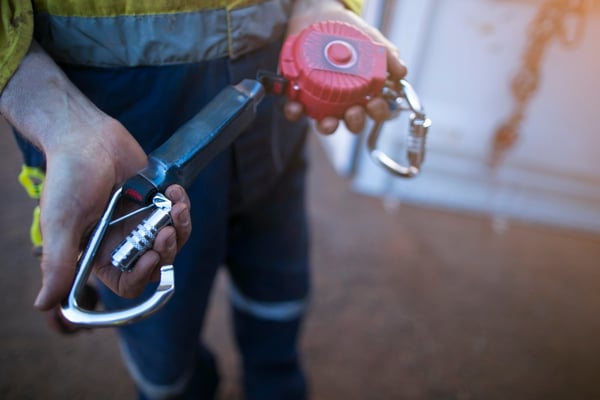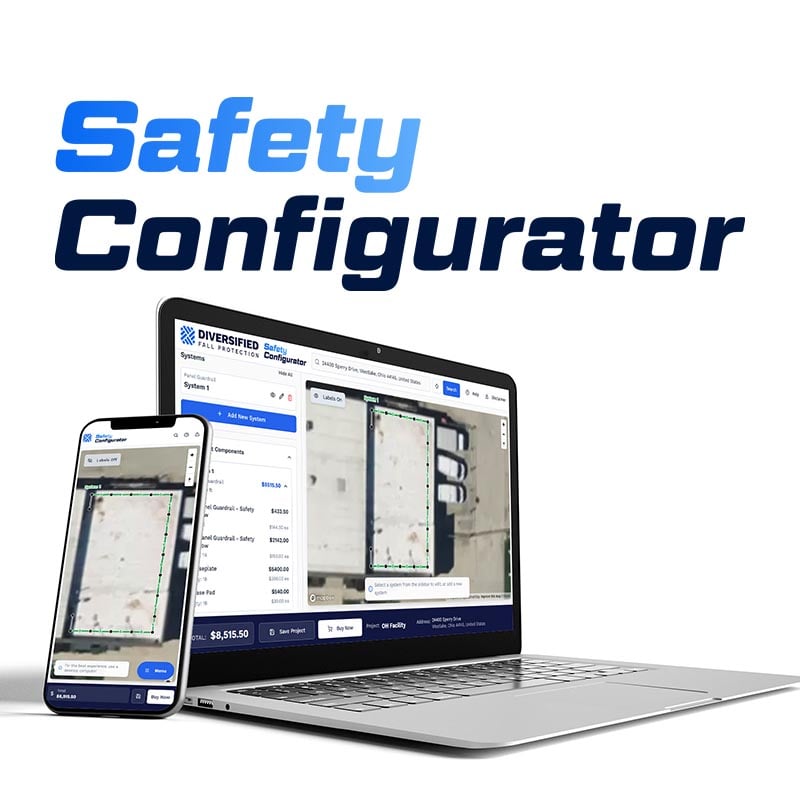
Understanding ANSI's New Self-Retracting Device Standard
In 2020, one-fifth of all workplace deaths in the United States occurred in the construction industry. Of those deaths, more than one-third resulted from a fall to a lower level(Source, BLS). While it's easy to dismiss these troubling statistics if your organization operates in a different industry, construction is far from the only sector with the potential for fatal falls.
Companies that want to reduce falls, protect employees, and maintain regulatory compliance must stay on top of the latest regulations. An excellent example is the recent changes to ANSI/ASSP Z359.14, Safety Requirements for Self-Retracting Devices for Personal Fall Arrest and Rescue Systems. This article will explore the new standard and provide an overview of the recent changes that may affect your business.
How ANSI Develops Standards
The American National Standards Institute (ANSI) oversees the development of standards for products, services, processes, systems, and personnel in the United States. ANSI develops standards through a consensus-based process that involves collaboration among stakeholders from industry, government, academia, and other organizations.
The process begins by forming a committee of representatives from various stakeholder groups responsible for developing the standard. The committee then drafts a standard and circulates it to collect public comments, which allows interested parties to provide feedback the committee can use to refine the standard.
The committee then discusses the comments received and works towards consensus on the standard. After finalized, the new standard is published by ANSI as an American National Standard and periodically reviewed and updated.
The ANSI Z359.14 standard
ANSI first released the Z359 standard in 1992 as a comprehensive guide to fall protection in the United States. The standard has become widely recognized as the authoritative document for fall protection and is a reference in OSHA regulations and other industry guidelines. The most recent revision, Z359.14-2021, published in July 2021, includes updated requirements for self-retracting devices (SRDs) used in fall protection systems.
According to Z359.14, a Self-Retracting Device is defined as "A device that contains a drum wound line that automatically locks at the onset of a fall to arrest the user, but that pays out from and automatically retracts onto the drum during normal movement of the person to whom the line is attached"
Z359.14-2021 makes identifying compliant SRDs easier for end-users by categorizing types and classes clearly, with standardized labeling and performance criteria. Overall, these changes significantly improve safety standards for self-retracting devices. Let's look at some of the most noteworthy areas that changed within the new standard.
Types of SRDs
The updated standard establishes requirements for three Self-Retracting Device (SRD) types: SRL, SRL-P, and SRL-R. This classification of SRDs helps manufacturers determine the specific testing they must perform on each SRD design they offer.
Here is how the standard defines each type:
Self-Retracting Lanyards (SRL)
The standard defines a Self-Retracting Lanyard (SRL) as "A self-retracting device in the form of a mechanical fall arrester, featuring a locking mechanism and energy management system to arrest the fall of and limit the forces imparted to the user."
Self-Retracting Lanyard, Personal (SRL-P)
The standard defines a Self-Retracting Lanyard, Personal (SRL-P) as "A self-retracting device designed such that it is compact enough and approved by the manufacturer to be worn by the user on a full-body harness to be used as a fall arrest connector, or alternatively mounted to an anchorage. These devices may, in some cases, be available in a dual configuration for the purpose of 100% tie-off."
Self-Retracting Lanyard with Integral Rescue Capability (SRL-R)
The standard defines a Self-Retracting Lanyard with Integral Rescue Capability (SRL-R) as "An SRL that includes an integral means for assisted rescue via raising or lowering the rescue subject. Some SRL-Rs may alternatively feature a mechanism which facilitates the controlled descent of the fallen user."
Classes of SRDs
The recent update to Z359.14 in 2021 removed Classes A and B used in previous versions and now categorizes SRDs as either Class 1 or Class 2. These two new classifications indicate each device's free fall capacity and if it can withstand a fall over an edge.
Class 1 SRDs
The new standard defines Class 1 SRDs as "Self-retracting devices which shall be used only on overhead anchorages and shall be subjected to a maximum free fall of 2 feet (610mm) or less, in practical application."
Class 1 devices are designed for anchorage at or above the user's dorsal D-ring location.
Class 2 SRDs
The new standard defines Class 2 SRDs as "Self-retracting devices which are intended for applications wherein overhead anchorages may not be available or feasible and which may, in practical application, be subjected to a free fall of no more than 6 feet (1.8m) over an edge."
Class 2 devices are designed for anchorage above, at, or up to 5 feet below the dorsal D-ring of the user and rated for use during leading-edge work.
Performance criteria
Z359.14-2021 introduces new performance criteria for all SRDs and eliminates multiple performance requirements. In the new standard, every class of SRD must meet specific thresholds for maximum arrest force, average arrest force, and maximum arrest distance.
Class 1 and Class 2 SRDs must meet the following performance criteria:
- Maximum arrest force of 1,800 lbs
- Average arrest force of 1,350 lbs
- Arrest distance of 32 inches.
Labeling requirements
Z359.14-2021 also introduced standardized labeling for SRDs and helps consumers and users quickly identify the best device for the specific fall hazards they face in their work area. All Class 2 SRLs will also include a fall clearance table or diagram. Standard labeling is as follows:
Class 1 devices will have a label that says "Class 1 Anchor at or above dorsal D-ring"
Class 2 devices will have a label that says "Class 2 Anchor above or below dorsal D-ring"
Conclusion
This article is an overview of the most significant changes in the new ANSI Z359.14-2021 standard, but it's by no means comprehensive. For more information, be sure to consult the standard directly.
The new standard provides guidelines and requirements that manufacturers must follow when designing, testing, and labeling SRDs. By adhering to these guidelines, manufacturers can ensure that their devices are reliable, durable, and capable of protecting workers from falls.
Additionally, the standard guides employers and workers on how to select, inspect, and use SRDs properly, which can help prevent accidents and injuries. Overall, the ANSI Z359.14-2021 standard is essential for promoting workplace safety and preventing falls, which can have severe consequences for workers and their families.
If you have questions about making sure your workplace is compliant with the latest regulations and standards, contact the safety experts at Diversified Fall Protection.
Schedule an assessment with Diversified Fall Protection
Contact Us to request a fall safety review

b-1.jpg?width=1368&height=1340&name=Rail%20(175)b-1.jpg)

